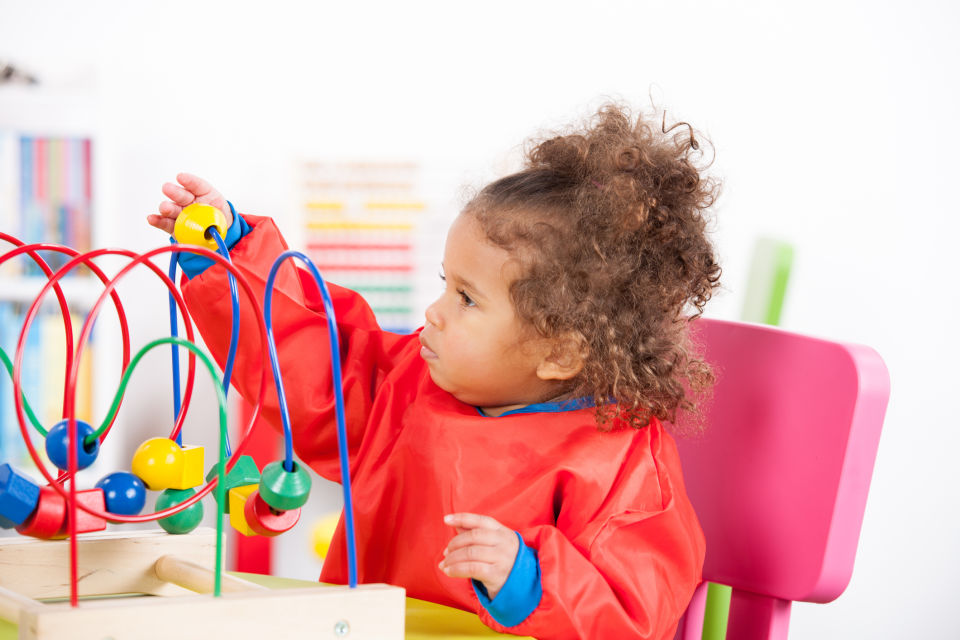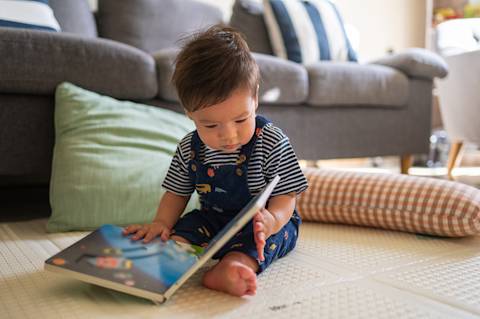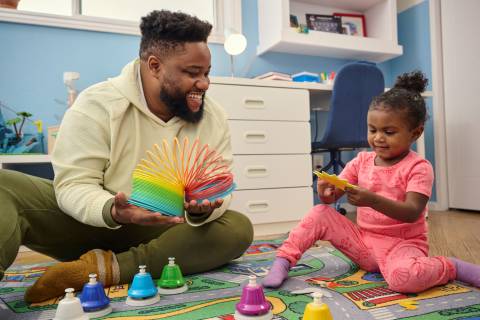Have you ever felt like your child has a never-ending supply of energy? If so, you’re not alone! Children aged 1–5 crave movement and activity that helps their bodies grow and develop.

Throughout the first five years of life, your child is going through a huge amount of physical growth and development. They’re building important motor skills, or the ability to move and control their muscles in a coordinated way. By engaging in play and physical activity, they’re helping develop those skills and their overall physical growth. Many children also have a natural curiosity about the world and their surroundings, leading them to explore their environment.
By providing your child with opportunities to be physically active each day, you’re not only supporting their growth and development, but you’re also helping them “get their wiggles out” by burning off their excess energy. Regular physical activity can improve children’s mood and sleep, which can also mean more sleep for you as their caregiver. We’ve listed some age-appropriate activities that you can try out with your child. When you can, try mixing in some structured play, such as playing a game together, in addition to some unstructured play, like dancing freely to upbeat music.
Pediatricians recommend that babies under 1 year old engage in physical activity throughout the day. For safety, all activities should be supervised by an adult. When possible, pediatricians suggest babies have about 15–30 minutes of tummy time each day, where you place your child on their stomach when they are awake and have adult supervision to strengthen the muscles in their neck, back, and abdomen. Tummy time can be broken up into smaller chunks of time throughout the day. For example, try spending about five minutes of tummy time in the morning, the afternoon, and early evening. If your child starts to get frustrated or fussy during tummy time, pick them up and try again at another time in the day to avoid any potential injury.
Other activities can include:
Holding blocks, your finger, or other objects that fit into their hands
Crawling around an open area that’s safe for them to explore
Pulling themselves up to a sitting position
Joining an infant swimming class with their caregiver
Doctors recommend toddlers get about 180 minutes, or 3 hours, of physical activity each day. This might seem like a lot, but it doesn’t have to be done all at once. It also includes activities that they’re likely already doing, like going for a walk, jumping, and moving around at home. When toddlers are doing any of the following physical activities, they should be supervised by an adult who can help them stay safe as they develop their coordination, balance, and strength.
Activities can include:
Taking a walk around the neighborhood
Going to a park and playing on the playground
Picking up toys and tidying around the house
Dancing to silly songs
Playing hopscotch
Playing games that involve throwing small, soft balls
Skipping
Running
Hiking
It’s also recommended that preschoolers spend about 180 minutes, or 3 hours a day, being active. Sixty of those minutes should be spent doing moderate-to-vigorous intense physical activity, such as jumping, running, hopping, climbing, dancing, bicycle riding, and more. These are activities that make them breathe a little harder and get their heart rate up. When you can, encourage your child to play independently with an adult nearby. Independent play is great for a child’s development, as they really get to tap into their imaginations. Read more about the benefits of independent play.
Activities can include:
Any of the activities previously listed for toddlers
Going to gymnastics classes
Getting involved in a team sport like soccer, basketball, T-ball, and more








